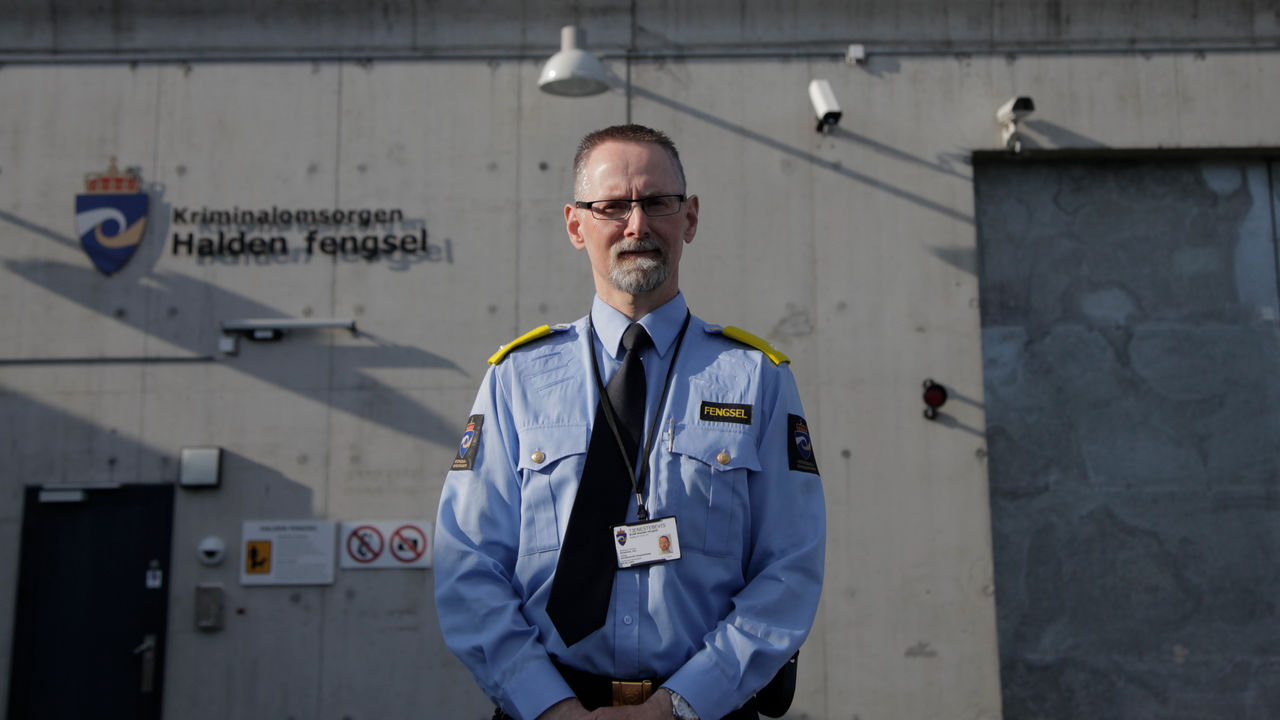“Breaking the Cycle” is a relatively short documentary that follows Jan Strømnes, warden of a maximum security prison in Norway, as he tours Attica Correctional Facility, a maximum security prison in New York.

There are really no comparisons to be made; it is all stark contrasts.
Halden Prison in Norway was established in 2010 and houses about two-hundred inmates, who are overseen by about three hundred and forty staff. Quaint by comparison to Attica, which has about two-thousand inmates, but a proportionally small staff of eight hundred seventy-five.
To the eyes of someone from the United States, Holden’s “cells” look more like a nice dorm room, or a micro-studio you would pay nearly $1,000 a month to rent in Seattle. Inmates have a bed, desk, closet, shelves, a small bathroom, a mini-fridge, and even a window.
Prisoners seem to be able to come and go from their rooms as they please, as there are communal kitchens where inmates prepare and eat meals together. There is an auto shop where guards work along-side prisoners, a newly-opened restaurant with an inmate as chef, and even a recording studio.
Halden staff think it just makes sense for prisoners to have enriching, educational, and vocational experiences. “They should be able to live a normal life that benefits them and society,” said Strømnes. Their focus is on trying to prepare inmates for when they get released, so that they can be normal, productive members of society, and “good neighbors”, as they say often.
Says one Halden inmate: “In Norway, we want to rehabilitate, not oppress people. I don’t think it’s too lenient, it creates opportunities. It reduces criminality. People realize that they are able to do other things than what they used to.”
By comparison, Attica does seem designed to oppress. One inmate comments on the cold, not just of the air and walls, but also the “vibe.”
“You have to be a strong individual to survive here.”
Strømnes is most disturbed by the cells, which are just like what we commonly see portrayed in movies or on TV: Three walls of cement and a full open front except for the vertical iron bars. Each cell has a small sink and toilet, but nothing to obscure this small bathroom area from full view of the guards in the hallway.
Strømnes asks the Attica Superintendent, Dale Artus, about this lack of privacy.
Artus gives an answer along the lines of “it’s always been this way” and says that inmates are allowed to hold a blanket over the bottom half of their bodies while they use their toilets, as if that makes it less invasive.
When Strømnes asks an inmate about the lack of privacy from the open cells, the inmate says it is inhumane and degrading. He says there is “no normalcy here” and that this “breeds a dysfunctional person.” Another Attica inmate says there is a culture of intimidation and oppression. But cameras installed throughout the prison have made things a little bit better, he notes.
Strømnes was surprised to hear from multiple inmates that there has been a reduction in the violence and harassment from guards since the cameras were added. I think his surprise was not from the reduction, but that this harassment was happening in the first place.
At Halden, staff interact respectfully with inmates all the time. In the film, we see a female guard playing a board game with a male inmate. She talks about how she is happy to feel like she is making a positive impact by working with these men and helping them to be better people when they are released.
Guards at Attica talk about how they are just happy to make in home safely at the end of the day. One wonders what they are afraid of, as they have weapons and power, and the inmates have neither.
Overlooking the exercise yard at Attica, guards are armed with an AR-15 and “chemical agents.” Artus seems puffed up with pride when he says they “haven’t deployed deadly force, the AR-15, in quite some time,” while they deploy the chemical agents a couple of times a year.
One of the Attica inmates talks to Strømnes about how many people leave prison with anger that has built up because of how they were treated in prison. He notes that it would be better for society if that didn’t happen, that people would then be more successful when they got out of jail and go back to society.
Another inmate notes that people in prison have additional issues, along with anger, that are not being addressed. Financial issues are a major issue, since if inmates don’t have money to get extra food from commissary, they are likely to be hungry, which just further fuels their anger.
Strømnes notes that the meals appear small, “not nutritionally sufficient for an adult male.” Lunch they day he toured consisted of a hot dog on a bun, an orange, soup, and coleslaw (the later two of which he noted most inmates declined, so they must be pretty poor quality for chronically-hungry men to turn down). So it’s understandable that when Strømnes told a small group of Attica inmates what Holden was like, one immediately asked, “Do you take international transfers?”
A Halden inmate explains, “We like to think that we are here as punishment, not to be punished. We already have our sentence and should not be punished more. There is no element of revenge. That’s the difference from the USA.”
After his trip, Strømnes says he met many people who want to change, even some of the executives at Attica, but, “I have also met many kind people who work in the wrong system. A good correctional treatment has a huge long-term impact on society. Many Americans don’t have that perspective. As a system, it is heavily based on punishment. That’s a shame.”
It is not just this belief there must be some punishment beyond the incarceration itself that prevents American prisons from taking better care of their inmates and actually attempting rehabilitation. It’s that fact that American prisons are often not run by the government, but are contracted out to for-profit corporations.
Feeding prisoners small, poor quality meals and not providing good educational, vocational, and rehabilitation opportunities definitely saves these companies money in the short term.
But long-term, the lack of rehabilitation and constant degradation that inmates face in prison makes it all the more likely that they will struggle after release, commit another crime, and end up back in jail, where companies are paid per prisoner.
This for-profit aspect of American prisons was not discussed in “Breaking the Cycle,” perhaps because it was too large of a topic to cover, since it indeed could easily be the topic of its own full-length film.
Nor was race ever discussed, and the way racism has shaped not only the prison population in the United States, but certainly the conditions of our prisons as well.
But even without addressing these issues, the film still brought up many important points and is worth watching, as long as you don’t mind reading subtitles when Norwegians are speaking. It is not a comprehensive look at all of the flaws in our prisons, but rather just a glance at some of the differences that are most glaring when compared to Norway’s respectful and humane maximum security prison.
“Breaking the Cycle” is available for streaming on Netflix.


Hi.
Thank you for reviewing our film and happy that you want to recommend it to people.
Following Jan Strømnes around meant we had to be true to his story and reactions, which made it hard to cover all aspects that makes the US system the way it is.
Since release last year we know the doc has been screened inside many US Prisons and universities and hopefully it’s been the source of many new debates/thoughts/discussions.
Thanks again for taking the time watch and write about it.
All the best.
I’m honored to have you, as the director of my film, read my review! And thank you for taking the time to comment as well.
That makes sense, that you could only really address topics in the film that Strømnes discussed, since he is the main subject of your film. Thank you for pointing that out.
Do you know if Attica made any changes as a result of Strømnes visit? Or if any other US prisons have been inspired by the film to make some changes?
Thank you again for reading the review and for commenting.